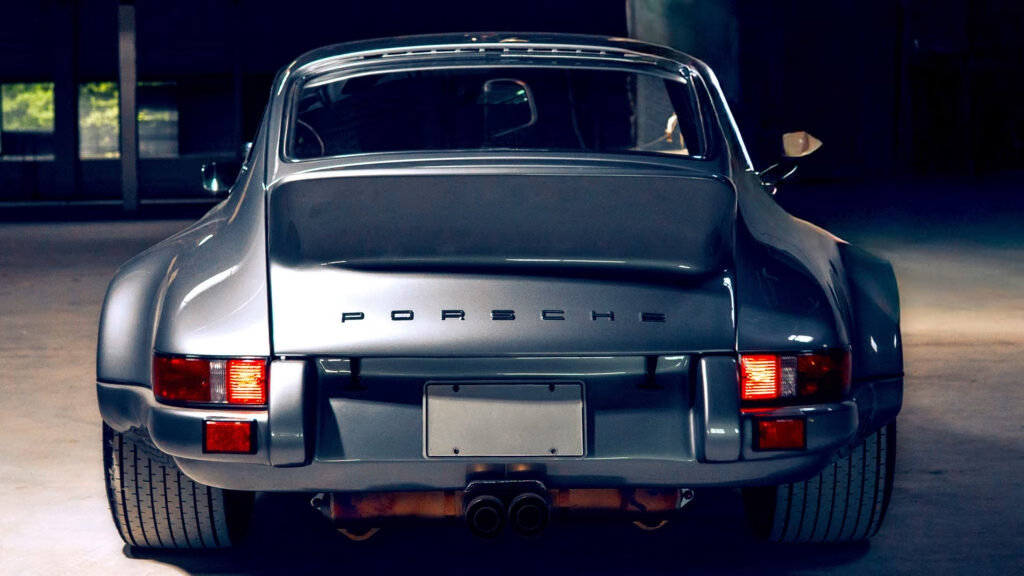What Makes Joe Rogan’s Custom RSR Project Porsche 911 So Special?
Joe Rogan’s car collection is legendary, but his latest addition—a bespoke Porsche 911 RSR tribute built by The RSR Project—takes things to a whole new level. This isn’t just another flashy garage queen. It’s a purpose-built machine that blends classic style, modern engineering, and a pure driver’s ethos. Let’s dig into what makes this restomod tick, why it commands such a hefty price tag, and what sets it apart from other custom 911s.
How Does The RSR Project Transform a Classic 911?
Every RSR Project build starts with a 1980s Porsche 911. But don’t expect a simple facelift. The original tub is stripped down and galvanized for longevity, then fitted with steel fender flares, custom fiberglass bumpers, and that iconic ducktail spoiler. The result? Pure magic. The car looks like it just rolled out of a vintage racing paddock, but with a level of fit and finish that would make even the pickiest collector nod in approval.
The company’s approach is all about balance—honoring the 911’s roots while subtly enhancing its presence. Fiberglass bumpers and flares keep weight down and lines crisp, while the steel fenders add the right amount of muscularity. It’s a look that’s aggressive but never over the top.
What’s Under the Hood—and Why Does It Matter?
Let’s talk power. The RSR Project doesn’t just swap in a bigger engine and call it a day. The original flat-six is meticulously rebuilt from the bottom end up. We’re talking new bushings, bearings, seals, springs, and valves. Cylinder heads are resurfaced, and then the magic happens: twin-plug heads, a GT3 air intake plenum, Clewett Engineering throttle bodies, new cams, fuel injectors, ignition coils, and a modern Emtron SL ECU.
All these upgrades push output to around 300 horsepower. Now, that might not sound like supercar territory, but in a featherweight, analog 911, it’s more than enough to get your heart racing. For context, the original 1980s 911 SC made about 180 hp. This restomod nearly doubles that, all while keeping the car’s character intact. It’s the kind of setup that rewards skilled driving and delivers feedback you just can’t fake.
Why Did Rogan Choose a Minimalist, Tech-Free Interior?
Rogan’s taste leans toward the timeless. Inside, the car is stripped back and reupholstered with black vinyl and nickel-grommeted bucket seats—a nod to the Ford GT40’s iconic look. The dash is classic Porsche, the carpets are new, and the steering wheel is a Momo Prototipo. There’s a short shifter for that mechanical feel, and yes, a modern air conditioning system for comfort.
But here’s the kicker: Rogan specifically opted out of any modern infotainment or audio system. No touchscreens, no digital distractions. Just you, the road, and the sound of that flat-six behind you. It’s a refreshing approach in a world where even sports cars are loaded with tech. For drivers who want to feel every nuance of the drive, this is the way.
How Does The RSR Project Ensure Each Build Is Truly Driver-Focused?
Richard Schickman, the founder of The RSR Project, is adamant: these cars are made to be driven, not displayed. Each build is thoroughly tested—Rogan’s example saw over 700 miles of shakedown before delivery. That’s not just a quick spin around the block. It’s a commitment to making sure the car delivers the visceral, analog experience that enthusiasts crave.
This philosophy sets The RSR Project apart from some other high-end restomod shops, where cars sometimes end up as static art pieces. Here, usability and reliability are just as important as aesthetics. The company’s reputation for quality is backed by customer testimonials and a growing waitlist—proof that their approach resonates with serious drivers.
Why Does This Restomod Cost $375,000 (and Often More)?
Sticker shock is real: base prices start at $375,000, and most builds end up costing even more thanks to endless customization options. But when you break down what goes into each car—hand-built craftsmanship, bespoke engineering, and obsessive attention to detail—the price starts to make sense.
For comparison, other high-profile Porsche restomods from companies like Singer Vehicle Design regularly fetch prices north of $500,000. The RSR Project’s builds are positioned as a slightly more accessible (but still ultra-premium) alternative, with a focus on driving purity rather than just show-stopping looks.
Is This the Ultimate Porsche 911 for Enthusiasts?
If you’re after a 911 that’s all about the driving experience—raw, mechanical, and deeply engaging—Rogan’s RSR Project build is tough to beat. It’s not about chasing lap times or packing in the latest gadgets. It’s about reconnecting with what made the 911 legendary in the first place: lightweight construction, responsive handling, and a soundtrack that stirs the soul.
The big takeaway? Building your dream 911 isn’t about perfection—it’s about smarter adjustments. Start with one change this week, and you’ll likely spot the difference by month’s end. Whether you’re restoring your own classic or just dreaming of that perfect backroad blast, the RSR Project’s approach is a reminder that the best cars are built to be driven, not just admired.

